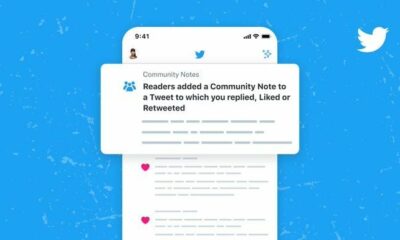SOCIAL
‘Greenwashing’: a new climate misinformation battleground

Many companies have vowed to reach “net zero” by 2050, but they are advertising and lobbying for more drilling and burning of the fossil fuels that are heating the Earth’s surface – Copyright AFP –
Roland LLOYD PARRY
Fossil fuel firms are misleading the public about their moves to cut greenhouse gases and curb climate change — and social media are hosting ads that perpetuate this “greenwashing”, researchers say.
AFP Fact Check took an in-depth look at how this is happening. The full report, including lobbying and communications fact boxes on 10 top oil and gas companies, is at http://u.afp.com/wDuA.
– Talking the talk –
Many companies have vowed to reach the “net zero” level of greenhouse gas emissions needed to keep global warming below 1.5 degrees Celsius under the Paris climate accords, the threshold established by scientists for avoiding the worst impacts.
At the same time, research shows, they are advertising and lobbying for more drilling and burning of the fossil fuels that are heating the Earth’s surface.
Leaders and businesspeople agree that changing how we warm our homes and power industries is no simple task.
But critics say the gap between slogans and action undermines meaningful efforts to cut emissions.
In a study published by the open-access science journal PLOS, scientists analysed the gap between talk and deeds on climate and low-carbon energy by four big oil companies: BP, Shell, ExxonMobil and Chevron.
Their green strategies “are dominated by pledges rather than concrete actions,” concluded the study, under lead author Mei Li of Tohoku University in Japan.
“Until actions and investment behaviour are brought into alignment with discourse, accusations of greenwashing appear well-founded.”
A search on the Facebook pages of big oil and gas firms and the social platform’s Ad Library shows that companies are posting green slogans while also running ads urging customers to “fill up your tank” or win “a year’s worth of gasoline”.
Contacted by AFP, the companies detailed plans to develop lower-carbon energy sources and measures such as carbon capture and storage — a method currently not advanced enough to be very helpful, according to the International Energy Agency (IEA).
ExxonMobil and Chevron spokespeople insisted that due to energy demand, the scenarios foreseen by the Paris deal and the IEA mean fossil fuels will have to play a part in the transition.
– Walking the walk –
Watchdogs also see greenwashing in environment-friendly but limited gestures by firms that campaigners say distract attention from their climate-harming operations.
Digital monitor Eco-Bot.net monitors cases where an online post “selectively discloses the company’s credentials or portrays symbolic actions to build a friendly brand image.”
It flagged ads and posts on protecting silkworms (Mexican cement firm Cemex), frogs (gas firm TransCanada), possums (Eletronuclear, subsidiary of Brazilian power firm Eletrobras), forests (various companies, including Spanish oil company Repsol) and one by US giant ExxonMobil on recycling fishing ropes in Patagonia.
New York-based greenwashing researcher Genevieve Guenther told AFP the key is to measure pledges against two standards: the UN Intergovernmental Panel on Climate Change’s (IPCC) net-zero date of 2050 and the IEA’s clean 2021 energy transition roadmap.
The latter says that to meet the 2050 target there would have to be “no investment in new fossil fuel supply projects” from now on. Any company planning new investments while also trumpeting net zero targets, Guenther said, is guilty of greenwashing.
– Delaying tactics –
An analysis by London-based research group InfluenceMap showed the five biggest publicly traded oil and gas companies spent $1 billion over three years to push misleading climate messages on Facebook.
Such amounts are small compared to the billions in revenues of Big Tech and Big Oil — for the latter, the two biggest US companies swung into combined profits of over $38 billion in 2021.
But pushing messages via social media has an outsize impact, said Melissa Aronczyk, an associate communications professor at Rutger University who has co-authored several studies on the subject.
“It is very easy and inexpensive to produce ads and campaigns for social media that can have a massive effect,” she told AFP.
Facebook says it monitors ads for misleading content just as it does with other forms of information on its platforms.
InfluenceMap analysed thousands of documents “to build up a very detailed picture of how major companies and industry groups are engaging on climate policy and how they are trying to influence debate,” said program manager Faye Holder.
“This greenwashing is essentially a tactic to delay government regulation. It also has the potential to mislead the public, by convincing them that action is already being taken on climate while Big Oil continues to lobby behind the scenes for new oil and gas development.”
In the United States, a Democrat-led committee has been hounding the big oil firms over their lobbying.
“Much of the lobbying has been indirectly done, cleverly, skilfully, cynically done by industry trade groups that have been formed by these companies,” Democratic congressman John Sarbanes told the committee on February 8.
“It is often very hard to disentangle the web of relationships and the sources of funding.”
SOCIAL
Snapchat Explores New Messaging Retention Feature: A Game-Changer or Risky Move?

In a recent announcement, Snapchat revealed a groundbreaking update that challenges its traditional design ethos. The platform is experimenting with an option that allows users to defy the 24-hour auto-delete rule, a feature synonymous with Snapchat’s ephemeral messaging model.
The proposed change aims to introduce a “Never delete” option in messaging retention settings, aligning Snapchat more closely with conventional messaging apps. While this move may blur Snapchat’s distinctive selling point, Snap appears convinced of its necessity.
According to Snap, the decision stems from user feedback and a commitment to innovation based on user needs. The company aims to provide greater flexibility and control over conversations, catering to the preferences of its community.
Currently undergoing trials in select markets, the new feature empowers users to adjust retention settings on a conversation-by-conversation basis. Flexibility remains paramount, with participants able to modify settings within chats and receive in-chat notifications to ensure transparency.
Snapchat underscores that the default auto-delete feature will persist, reinforcing its design philosophy centered on ephemerality. However, with the app gaining traction as a primary messaging platform, the option offers users a means to preserve longer chat histories.
The update marks a pivotal moment for Snapchat, renowned for its disappearing message premise, especially popular among younger demographics. Retaining this focus has been pivotal to Snapchat’s identity, but the shift suggests a broader strategy aimed at diversifying its user base.
This strategy may appeal particularly to older demographics, potentially extending Snapchat’s relevance as users age. By emulating features of conventional messaging platforms, Snapchat seeks to enhance its appeal and broaden its reach.
Yet, the introduction of message retention poses questions about Snapchat’s uniqueness. While addressing user demands, the risk of diluting Snapchat’s distinctiveness looms large.
As Snapchat ventures into uncharted territory, the outcome of this experiment remains uncertain. Will message retention propel Snapchat to new heights, or will it compromise the platform’s uniqueness?
Only time will tell.
SOCIAL
Catering to specific audience boosts your business, says accountant turned coach

While it is tempting to try to appeal to a broad audience, the founder of alcohol-free coaching service Just the Tonic, Sandra Parker, believes the best thing you can do for your business is focus on your niche. Here’s how she did just that.
When running a business, reaching out to as many clients as possible can be tempting. But it also risks making your marketing “too generic,” warns Sandra Parker, the founder of Just The Tonic Coaching.
“From the very start of my business, I knew exactly who I could help and who I couldn’t,” Parker told My Biggest Lessons.
Parker struggled with alcohol dependence as a young professional. Today, her business targets high-achieving individuals who face challenges similar to those she had early in her career.
“I understand their frustrations, I understand their fears, and I understand their coping mechanisms and the stories they’re telling themselves,” Parker said. “Because of that, I’m able to market very effectively, to speak in a language that they understand, and am able to reach them.”Â
“I believe that it’s really important that you know exactly who your customer or your client is, and you target them, and you resist the temptation to make your marketing too generic to try and reach everyone,” she explained.
“If you speak specifically to your target clients, you will reach them, and I believe that’s the way that you’re going to be more successful.
Watch the video for more of Sandra Parker’s biggest lessons.
SOCIAL
Instagram Tests Live-Stream Games to Enhance Engagement

Instagram’s testing out some new options to help spice up your live-streams in the app, with some live broadcasters now able to select a game that they can play with viewers in-stream.
As you can see in these example screens, posted by Ahmed Ghanem, some creators now have the option to play either “This or That”, a question and answer prompt that you can share with your viewers, or “Trivia”, to generate more engagement within your IG live-streams.
That could be a simple way to spark more conversation and interaction, which could then lead into further engagement opportunities from your live audience.
Meta’s been exploring more ways to make live-streaming a bigger consideration for IG creators, with a view to live-streams potentially catching on with more users.
That includes the gradual expansion of its “Stars” live-stream donation program, giving more creators in more regions a means to accept donations from live-stream viewers, while back in December, Instagram also added some new options to make it easier to go live using third-party tools via desktop PCs.
Live streaming has been a major shift in China, where shopping live-streams, in particular, have led to massive opportunities for streaming platforms. They haven’t caught on in the same way in Western regions, but as TikTok and YouTube look to push live-stream adoption, there is still a chance that they will become a much bigger element in future.
Which is why IG is also trying to stay in touch, and add more ways for its creators to engage via streams. Live-stream games is another element within this, which could make this a better community-building, and potentially sales-driving option.
We’ve asked Instagram for more information on this test, and we’ll update this post if/when we hear back.
-

 WORDPRESS7 days ago
WORDPRESS7 days agoTurkish startup ikas attracts $20M for its e-commerce platform designed for small businesses
-

 MARKETING6 days ago
MARKETING6 days agoRoundel Media Studio: What to Expect From Target’s New Self-Service Platform
-

 SEO6 days ago
SEO6 days agoGoogle Limits News Links In California Over Proposed ‘Link Tax’ Law
-
SEARCHENGINES6 days ago
Daily Search Forum Recap: April 12, 2024
-

 SEARCHENGINES7 days ago
SEARCHENGINES7 days agoGoogle Search Results Can Be Harmful & Dangerous In Some Cases
-

 SEO5 days ago
SEO5 days ago10 Paid Search & PPC Planning Best Practices
-

 SEARCHENGINES5 days ago
SEARCHENGINES5 days agoGoogle Core Update Volatility, Helpful Content Update Gone, Dangerous Google Search Results & Google Ads Confusion
-

 SEO6 days ago
SEO6 days agoGoogle Unplugs “Notes on Search” Experiment















You must be logged in to post a comment Login